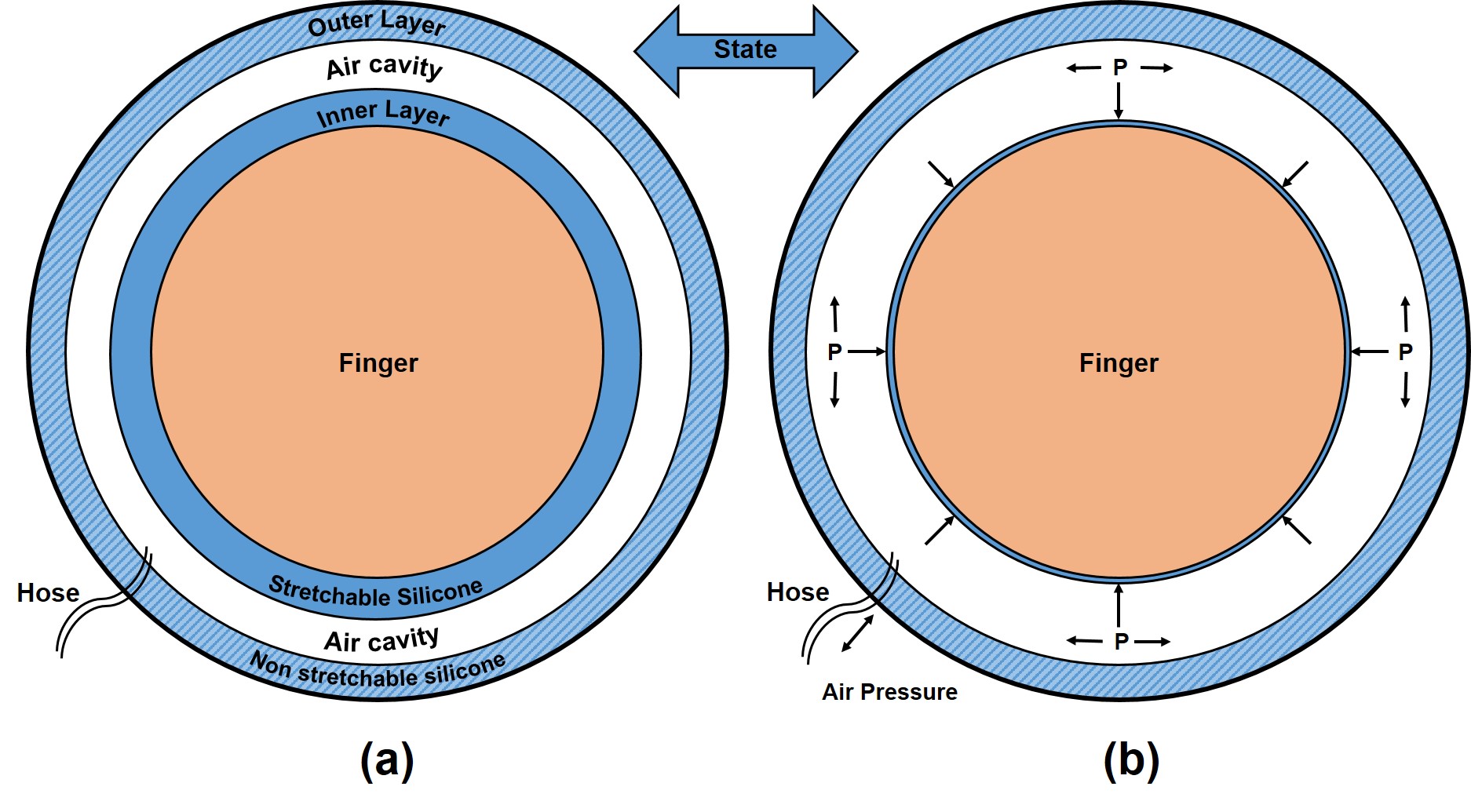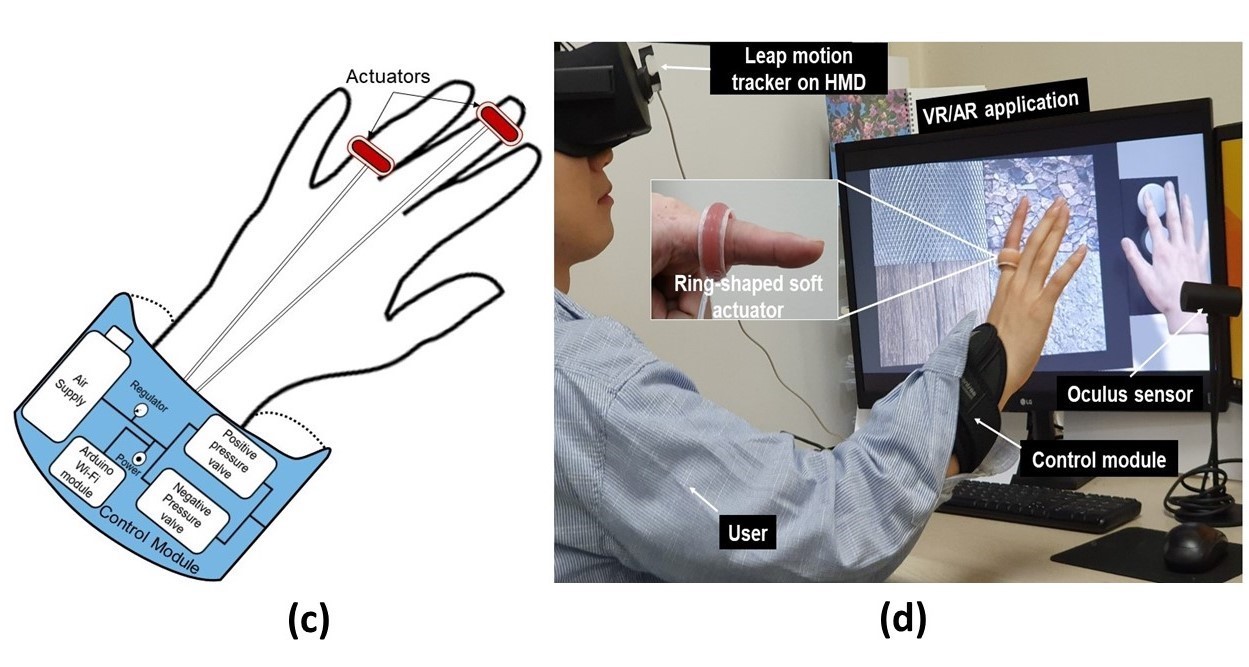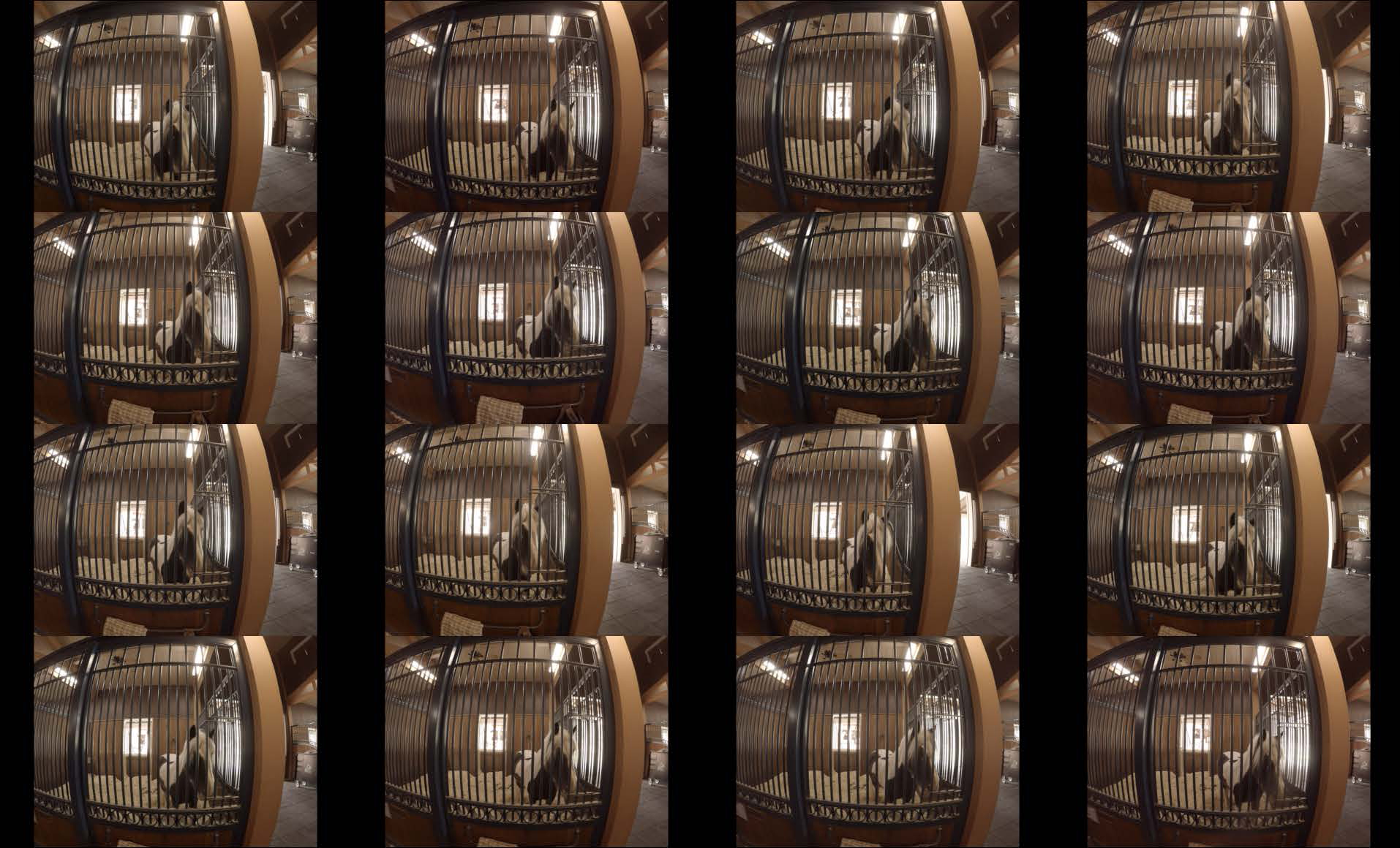“Wearable Soft Pneumatic Ring with Multi-Mode Controlling for Rich Haptic Effects” by Talhan, Kim and Jeon
Conference:
Type(s):
Entry Number: 65
Title:
- Wearable Soft Pneumatic Ring with Multi-Mode Controlling for Rich Haptic Effects
Presenter(s)/Author(s):
Abstract:
Common mechanical actuators for haptic feedback are generally dedicated to creating single kind of feedback, e.g., vibrotactile only, the pressure only, or shear force only, [Choi and Kuchenbecker 2013; Girard et al. 2016; Pacchierotti et al. 2017]. This is against the fact that highly realistic fully immersive VR/AR sometimes requires rather complete and rich multi-mode haptic feedback. For instance, when rubbing your finger on a wooden desk, the fingertip simultaneously senses both the high-frequency vibration due to the roughness of the surface texture and the quasi-static pressure due to pushing force, and your brain combines them to feel it as a wooden desk. The lack of any of the involved physical signal may seriously deteriorate the realism. This may be one of the reasons why current haptic interface technology for VR/AR environments is not at the same level as visual interfaces. Using multiple actuators having different covering bandwidth can be one of the solutions. However, making different mechanical end-effectors from multiple actuators share the same contact area on a finger skin is not a trivial task. Besides, multiple hardware inherently makes the system bulky, decreasing the usability, especially when wearability is one of the important requirements.
This paper presents our new haptic interface that partially overcomes the issues. The interface is a soft silicone bladder and wearable, i.e., small and light enough to wear, to the finger as a ring. It is capable of providing various haptic feedback including high pressure, high-frequency vibration (up to 250 Hz), and an impact to the finger simultaneously through a single end-effector. Through our empirically formulated controlling algorithm, the rendered pressure, the frequency of the vibration, and the amplitude of the vibration can be precisely controlled.
References:
- Seungmoon Choi and Katherine J Kuchenbecker. 2013. Vibrotactile display: Perception, technology, and applications. Proc. IEEE 101, 9 (2013), 2093–2104.
- Adrien Girard, Maud Marchal, Florian Gosselin, Anthony Chabrier, FranÃğois Louveau, and Anatole LÃľcuyer. 2016. HapTip: Displaying Haptic Shear Forces at the Fingertips for Multi-Finger Interaction in Virtual Environments. Frontiers in ICT 3 (2016), 6. https://doi.org/10.3389/fict.2016.00006
- Claudio Pacchierotti, Stephen Sinclair, Massimiliano Solazzi, Antonio Frisoli, Vincent Hayward, and Domenico Prattichizzo. 2017. Wearable haptic systems for the fingertip and the hand: taxonomy, review, and perspectives. IEEE transactions on haptics 10, 4 (2017), 580–600.
Keyword(s):
Additional Images:


Acknowledgements:
This work was supported by the NRF of Korea through the Global Frontier RD Program (2012M3A6A3056074) and by Ministry of Culture, Sports and Tourism (MCST) and Korea Creative Content Agency (KOCCA) in the Culture Technology (CT) Research Development Program 2019.






